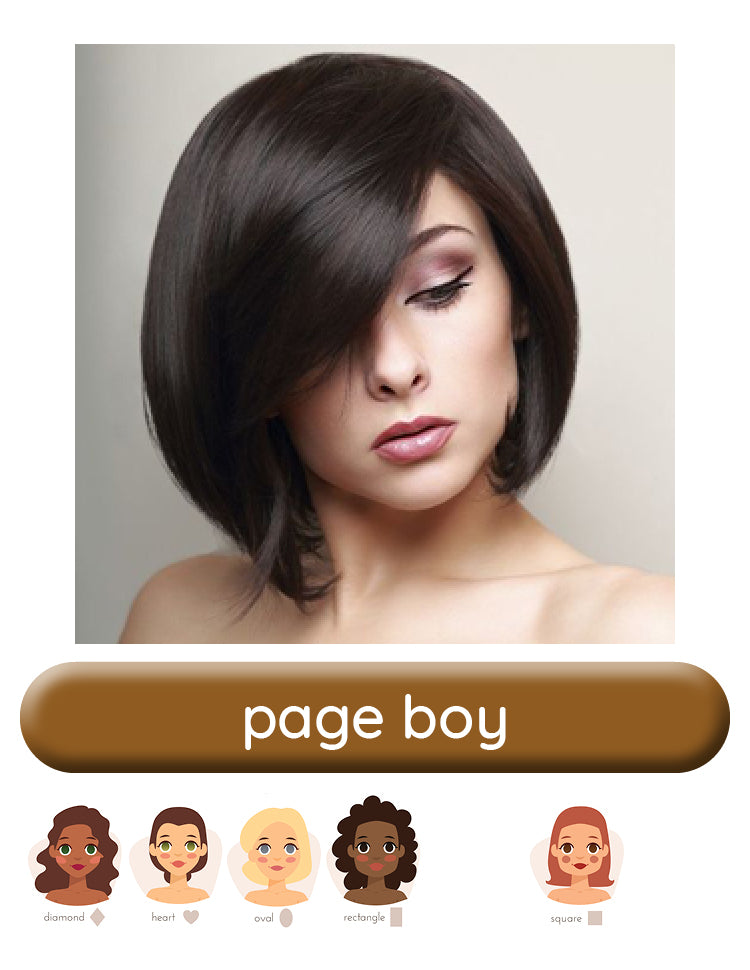Wig Styles Guide

There are hundreds if not thousands of hairstyles across cultures and time, so it may feel a bit daunting finding the single style that suits you best. Below we've compiled a dozen collections based on core styles that serve as foundations for the dreams of creative stylists and those bold enough to wear their visions. You'll find everything from Afros to Wedges, Bobs and Pixies and the countless variations that fill Abantu's shelves. Each core style below features one or more of the face shapes the experts would say are best suited.

If dazzling colour is your a major deciding factor, use these button links to see wigs featuring one or more Vibrant and/or Surreal colours.
Scroll to to get a head start on finding your favourite styles...
A natural style for lengthy, kinky hair texture, but for straight or curly hair holding gels and pick combing is the key to Afro success, drawing hair away from the scalp into a large rounded dome. Popularized in the 60’s it endures generally as shorter, shaggier variations.
Waves and curls, twists and braids, flicks and feathers that dance below the shoulder forever. Thanks in great part to the 1970's Big Hair is here to stay and remains the epitome of ultra glamour.
Almost any short or medium-length style ending in a distinctly blunt cut defines a Bob. Born in the feminist wave of the 1920's the playful and bouncy Bob endures in endless variations. Typically shorter (earlobe and chin) Bobs can be angled in any direction with or without bangs.
Braided hair has proven a constant favourite across generations and cultures and encompasses styles as diverse as classic Scandinavian braided ponytails and the wild and free dreadlocks of the Caribbean.
Born of big-hair-80's the Mullet is loved and scorned by both sexes. The classic is defined by short layers on the top and sides while the back is grown much longer. The transition can be abrupt or seamless and overall lengths vary considerably.
Typically shoulder-length or shorter at the back and sides, lightly layered for body and frequently featured with full bangs, the Page Boy is elegant, clean and simple from root to tip.
Braided tails below the shoulder are the most common variety of Pig Tails for all ages while bunched braids pulled to the crown share youthful popularity with non-braided Pig Tails that rise from the crown more like fountain.
Like the Bob of 1920's, the Pixie of 1950's and 60's Hollywood as a distinctly feminist statement, defined by a distinctly boyish 'short back 'n sides with more on top'. Today you'd be hard-pressed to find a Hollywood Starlette that hasn't flaunted one of a thousands Pixie variations at least once.
The most practical hairstyle of the last 300 years, the Ponytail requires only one or two clips, bands or scrunchies and all the hair swept back to the crown. The tail can be worn high or low and even to one side.
A 60's favourite, this smooth, blunt hairdo is bowl shaped, with a cut line that angles the sides to the nape of the neck. Ends are tapered to curve inward toward the head. Longer and looser Purdey variations endure 50 years late.
In every length imaginable, the unisex Shag remains sexy and sassy with crown-heavy layering, frequently feathered and teased top and sides to lighter fringes. 70's to the 90's rock stars and film stars forever put the Shag on the hairstyle map.
Less of a 'style and more of an awe-inspiring finish, Silky Smooth is defined by the combination of luxuriously smooth and shiny, straight hair of notable length. Accent with a slight wave or delicate flicks of the fringes.
Typically straight hair between ear lobe and chin length, the Wedge features a short cut back and sides with longer outer layers at the crown and top-sides often layered a second time with a razor, to add even more wedge dimension.















